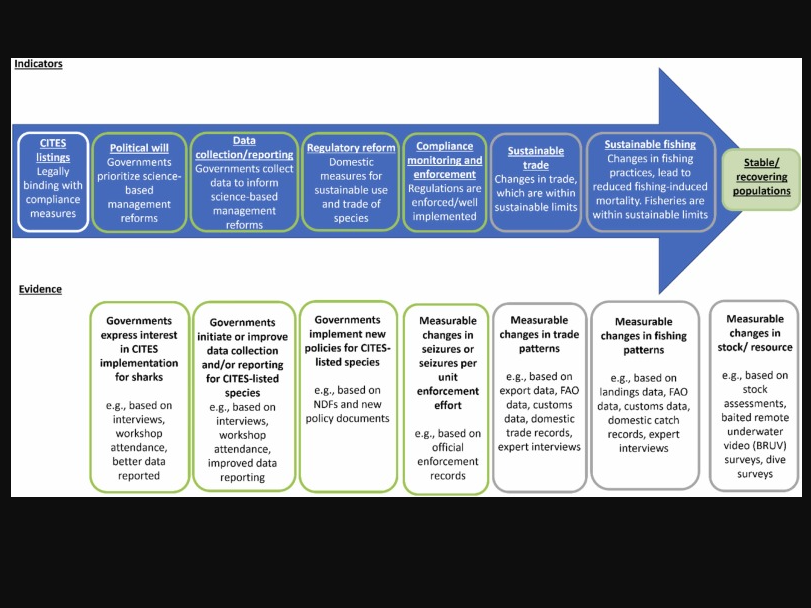
International wildlife trade contributes to the loss of biodiversity and has driven several terrestrial and aquatic species to extinction. Sharks and rays are some of the most threatened vertebrates, with overfishing considered the primary threat causing substantial global population declines. To prevent further depletions driven by the demand for and trade in shark and ray products. Parties to the Convention on International Trade in Endangered Species of Wild Fauna and Flora (CITES) listed 44 species on Appendices I and II between 2003–2019. Of these, the majority (n = 39) have been listed on Appendix II due to their commercial value and prevalence in the international trade. Evaluating the impacts of these listings is critical to ensure they are achieving their intended objectives. However, this can be particularly challenging due to the complexities of international trade in sharks and rays and the intersection of fisheries management and trade regulations. We used a combination of theory and case-based approaches to assess the impact of CITES listings on shark and ray conservation globally. For the 183 CITES Parties evaluated, we found evidence of political will (54 %) and regulatory reforms (48 %), supported by effective compliance monitoring and enforcement with non-compliant trade confiscations made by 27 % of Parties. Results highlight the need to improve the granularity of catch and trade data collected and reported for CITES-listed species, conduct studies designed to detect mortality reduction, and further investigate illegal trade. These will be critical next steps for Parties to achieve the sustainable trade of CITES-listed species. They will ensure trade is supplied by sustainable fisheries and, over time, document stable and/or recovering populations. Case studies highlight countries in the global tropics, where CITES listings have driven improved shark management. These countries are examples for those seeking to improve their CITES management efforts. The severity of the shark and ray conservation crisis dictates that trade reforms driven by CITES listings alone are likely insufficient to address the complex challenge of overfishing, which can also be driven by domestic demand. Nevertheless, results demonstrate that CITES can play a critical role in improving global shark and ray conservation and management measures at national scales.














